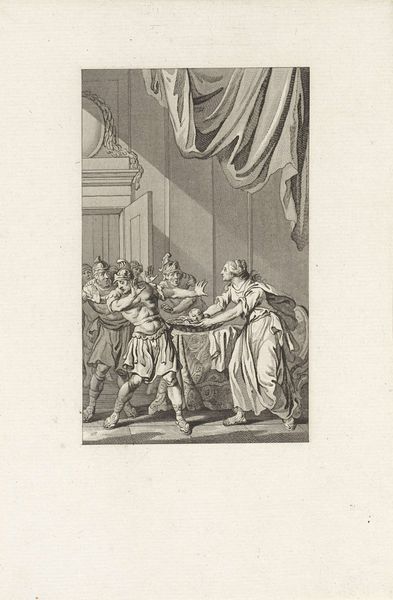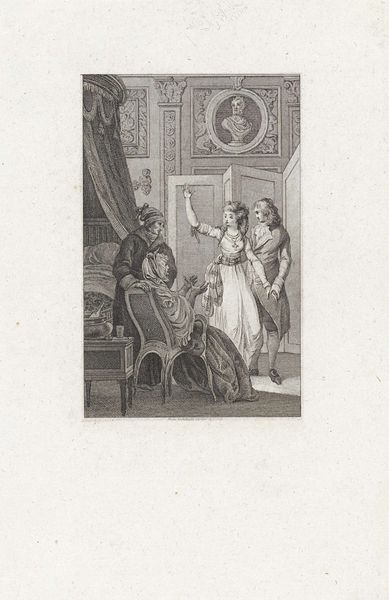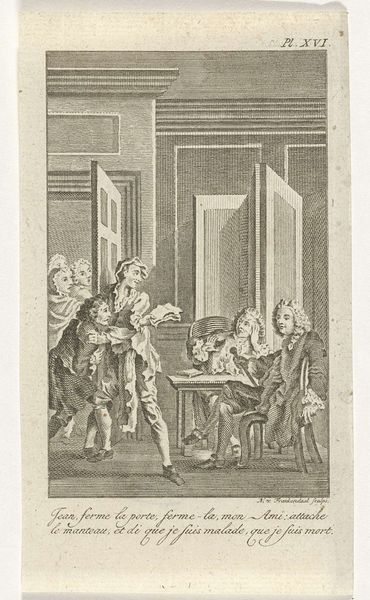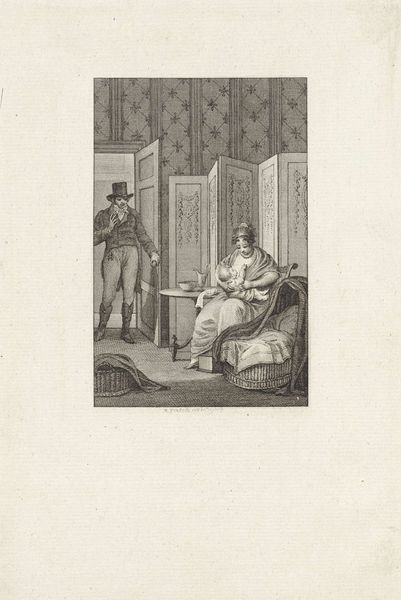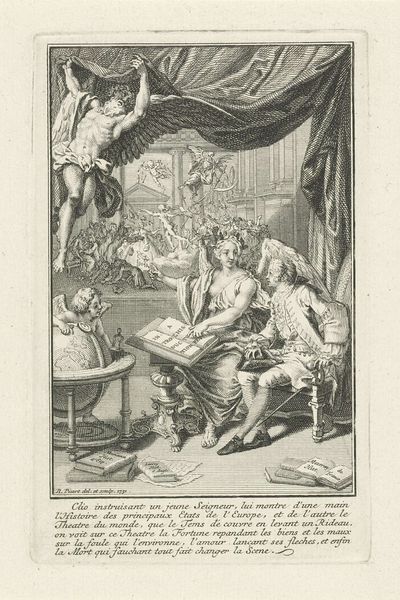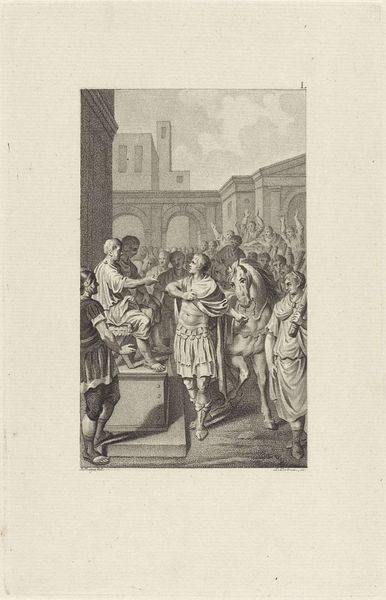
drawing, print, engraving
#
drawing
#
neoclacissism
# print
#
history-painting
#
engraving
Dimensions: height 215 mm, width 134 mm
Copyright: Rijks Museum: Open Domain
Editor: This engraving, "Death of Archimedes" by Ludwig Gottlieb Portman, dates to 1795 and is currently held at the Rijksmuseum. It depicts a soldier bursting into a room, sword raised, seemingly about to strike Archimedes, who sits calmly at his desk. There's a real sense of impending violence juxtaposed with the scholar's focused stillness. What do you make of it? Curator: Well, situated within the broader context of neoclassicism, it reflects a renewed interest in classical antiquity, yet with a strong undercurrent of political messaging, don’t you think? How do you interpret the choice to depict this specific moment in Archimedes’ life? Editor: It feels like a statement about the cost of intellectual pursuit, maybe? The way knowledge and reason can be threatened by brute force. Is that a reading you think holds up historically? Curator: Absolutely. Remember, the late 18th century was a time of revolution and upheaval. Representing Archimedes' death, an event from the Roman conquest of Syracuse, would resonate deeply with contemporary anxieties about the fragility of civilization and the abuse of power. Portman used this historical subject to engage a discussion about the values of the Enlightenment versus tyranny, reflecting contemporary ideological struggles through the lens of the past. How might the display context within the Rijksmuseum today influence our understanding of this artwork now, do you think? Editor: That’s fascinating! Putting it in a museum obviously elevates it, but it also kind of detaches it from that immediate political urgency. It becomes a historical document as much as a commentary on power. Curator: Precisely! And that shift in reception over time highlights how institutions like museums actively shape and reshape the meaning of artworks, directing us towards specific interpretations, moving the social and political narrative onward. Editor: That really makes me rethink how art functions as a kind of ongoing conversation with the present. Thanks! Curator: Indeed! And examining how an artwork's meaning evolves within the public sphere gives us insights into broader historical currents.
Comments
No comments
Be the first to comment and join the conversation on the ultimate creative platform.

